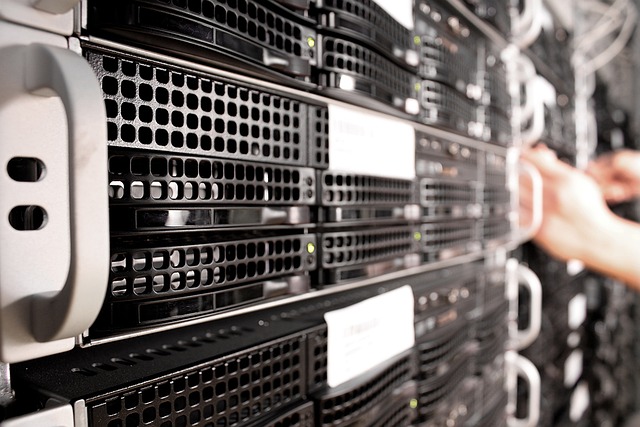For users who have just come into contact with cloud computing and cloud host management, choosing the appropriate cloud host configuration is the first step. Reasonable configuration selection is also an important part of learning, developing and testing cloud computing technology. Cloud hosts offer flexibility, scalability and cost-effectiveness. What analyses should learners conduct when choosing the right cloud host configuration? Here are some relevant suggestions to share with you.
First of all, the configuration choice of cloud hosts depends on the learning goals and purposes. For instance, if the goal is to learn the basic knowledge of the Linux operating system and server management, choosing a low-configuration cloud host is sufficient, as this type of learning focuses more on operating system commands, file systems, permission management, and other contents. In this case, a cloud host configuration with 2GB of memory, a 1-core CPU and a 20GB SSD hard drive can meet the requirements. In addition, such a configuration has a relatively low cost for beginners and is suitable for conducting basic experiments and learning.
On the other hand, if the learning objective is Web development, database management or the setup of a development environment, the configuration requirements for cloud hosts will increase. The development environment usually needs to support the simultaneous operation of multiple applications, so the cloud host needs to have strong computing power and large storage space. In this case, choosing a configuration with 4GB of memory, a 2-core CPU and a 50GB SSD hard drive is more appropriate. This type of configuration can not only support common Web development frameworks (such as Node.js, PHP, Django, etc.), but also meet the operational requirements of databases (such as MySQL, PostgreSQL), and at the same time be capable of handling a relatively small scale of traffic or access volume.
If the focus of learning is on high-performance computing (such as artificial intelligence, machine learning, big data processing, etc.), then when choosing a cloud host, more powerful computing capabilities are needed, especially GPU acceleration. For high-load tasks such as deep learning, image processing or big data analysis, ordinary cpus may not be able to meet the computing requirements. Therefore, it is recommended to choose a cloud host configuration with GPU support.
For learning cloud computing itself (such as building distributed applications, containerized deployment, etc.), the configuration requirements of cloud hosts are rather complex. Because learning cloud computing involves the configuration and management of multiple nodes, it usually requires high memory, computing power and network bandwidth support. Generally speaking, at least 8GB of memory, a 4-core CPU, a large hard disk storage capacity (such as an SSD with a capacity of over 100GB), and a good network bandwidth are required. This configuration can ensure the stability and smoothness of multiple virtual machines, containers or Kubernetes clusters running on cloud hosts, helping learners gain a deeper understanding of the related technologies of cloud computing.
In addition to hardware configuration, when choosing a cloud host, it is also necessary to consider other functions and services provided by the cloud service provider. For instance, many cloud service providers offer a wealth of API interfaces, automated management tools, operating system images, backup and recovery solutions, etc. All these can help learners improve work efficiency and reduce management complexity. For beginners, it is very important to choose a cloud service provider that offers comprehensive documentation and technical support, so that they can receive timely assistance when encountering problems.
In addition, learners also need to consider the geographical selection of the cloud host. Although the configuration of cloud hosts is a key factor affecting performance, the geographical location of the server can also directly impact network latency and access speed. If your learning goal is to build services for a specific country or region, then it is very important to choose a cloud data center that is close to the target users. For example, if learners plan to provide Web services to users in the Asian region, choosing data centers located in Tokyo, Singapore or Hong Kong will significantly reduce latency and enhance the user experience.
For learners with limited budgets, many cloud service providers offer free trial packages or low-cost entry-level cloud host configurations, all of which are good choices for learning cloud computing. Through some free packages/test services, learners can not only experience the basic functions of cloud hosts, but also conduct experiments, tests and practices without significant economic pressure.
When choosing the configuration of a cloud host, its scalability also needs to be considered. As learning deepens, the demand for resources may change. Most cloud service providers offer on-demand expansion services, allowing users to adjust the memory, CPU, storage space and other resources of cloud hosts at any time according to their actual needs.

Different operating systems and development environments have different requirements for resources. For instance, when learning the Linux system, commonly used operating systems such as Ubuntu and CentOS have relatively moderate requirements for memory and hard disk. However, if the Windows Server operating system is chosen to be used, higher requirements may be placed on the hardware configuration, especially the memory and processor.
Choosing the appropriate cloud host configuration is crucial for learners. A suitable configuration can help complete the basic learning smoothly during the learning process, and also enable more advanced technical applications and lay the foundation for project development.






